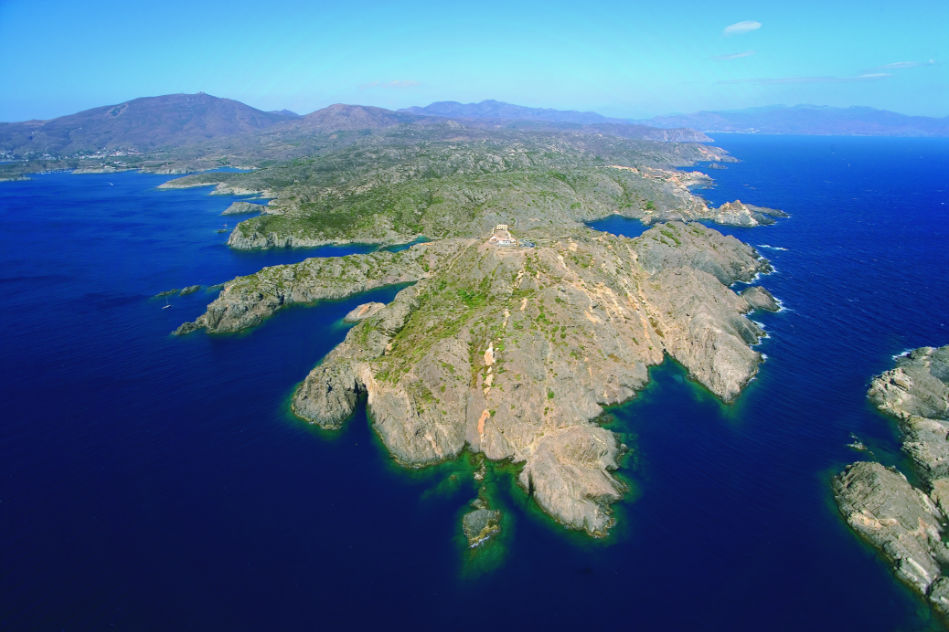Cap de Creus
The cape of Creus peninsula is located in the eastern most part of the Iberian peninsula, halfway between the district towns of Cadaqués, Port de la Selva, Selva de Mar, Llançà, Vilajuïga, Pau, Palau-saverdera and Roses. This is where the Cap de Creus Natural Park, the first maritime-terrestrial park in the country, can be found. It was created thanks to a law in 1998, which protects the cape of Creus peninsula (some 11,000 hectares) and its marine environment (some 3,000 hectares).
They are areas of exceptional biological, geological and scenic quality, which required protection with a special care regime. The geological configuration, unique in the world, and the rich vegetation, in which Mediterranean and continental elements coexist, have led to numerous strange species, some endemic. The area also has a high potential for faunal recovery.
The park has two differentiated protected areas: land and maritime. In the land area there are three natural areas of national interest: from Cap Gros to Cap de Creus, to the north, which includes a nature reserve, that of Cap de Creus, with the Maça Major and s’Encalladora islands; Falconera point on the Norfeu cape, to the south (the latter also a nature reserve), and the Rodes mountain range. All the islands, small and large, in the marine environment of Cap de Creus are also Natural Sites of National Interest.
The area of the protected marine area ranges between 1.3 and 0.2 miles out to sea, with three partial nature reserves: the Farallons, the Creus cape (between the island of Culleró and Jugadora cove) and the Norfeu cape. The north of the s’Encalladora island is a marine nature reserve. The waters are clean and pure, and the wealth of underwater life is exceptional, with species such as corals (a significant source of income in other times) and seaweed meadows.
In addition to the unquestionable biological and geological value of the area, is the exceptional scenic beauty that it offers: wild, varied and colourful. Abrupt cliffs, dark rocks furrowed by the wind and salt, islands and secluded coves. There are a number of places that are exposed to the fury of the tramontana winds and others that are shielded from this dry and wild wind, where the views are simply unrepeatable, as appreciated by celebrities such as Josep Pla or Salvador Dalí.
The architectural heritage of the Creus cape is first rate. The most notable example is the Sant Pere de Rodes monastery, today the park offices.
The park information centre, in the monastery, has information about the different routes and activities that are organised.
Virtual tour:
– Cala Jugadora
– Cala Tulip
– Pas de Claveguera
– La Vall de Santa Creu – el Port de la Selva
– Pau – La Creu Blanca

